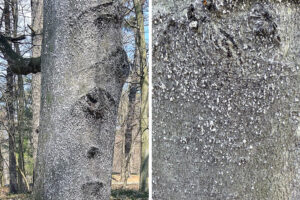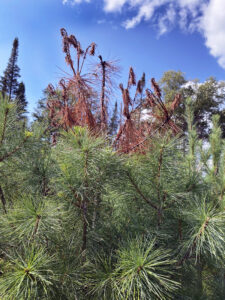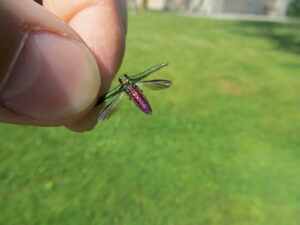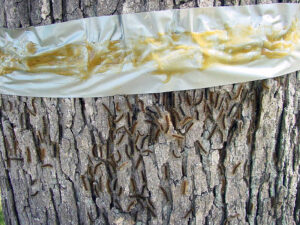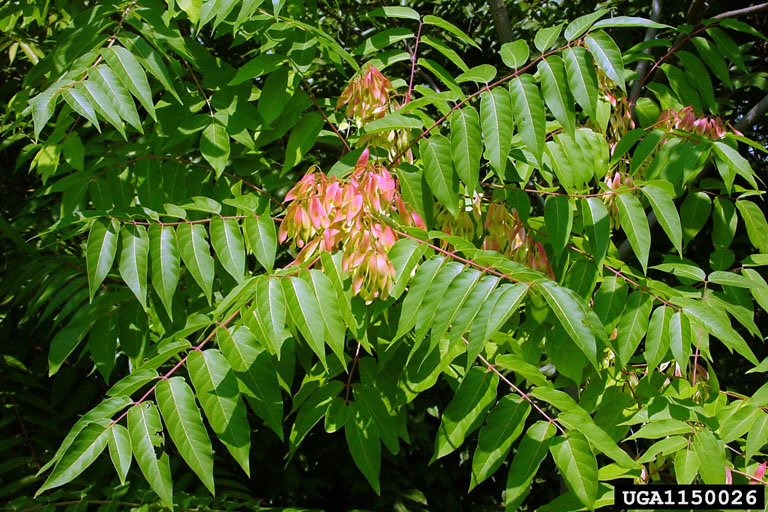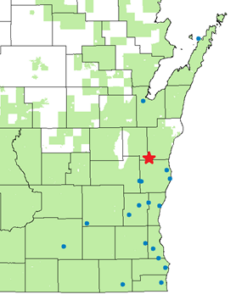By Linda Williams, DNR Forest Health Specialist, Woodruff; Linda.Williams@wisconsin.gov or 920-360-0665
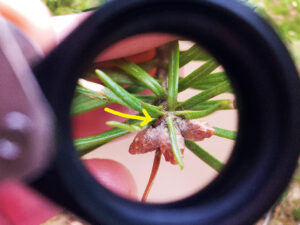
Spruce budworm overwinters as tiny caterpillars (yellow arrow) that migrate to the buds before they start to swell in the spring. A magnifying lens is needed to see them at this stage. / Photo Credit: Linda Williams, Wisconsin DNR.
For the 11th consecutive year in Wisconsin, spruce budworm has caused significant defoliation on spruce, balsam fir and tamarack in some areas of the state.
This year, areas with widespread severe defoliation include Oneida and Vilas counties, with Forest, Iron, and Langlade counties also showing significant defoliation.
Continue reading “Severe Spruce Budworm Defoliation Hits In Northwest”

